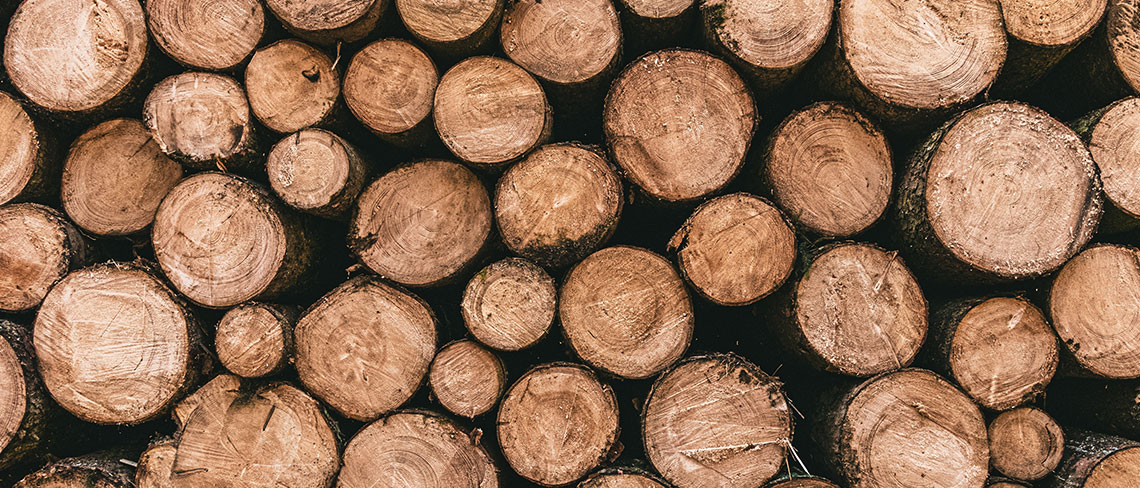
Contura expert shares the dos and don’ts of wood storage.
How aware are you of common wood storage blunders vs wood stacking best practice? Whilst conversations around ideal environment, correct stacking methods or the indoor vs outdoor debate may sound trivial to the standard stove owner, different wood storage options could mean the difference between a cost effective, efficient and low emissions burn and a smoky, wasteful, costly fire that doesn’t heat the space efficiently.
Phil Wood, woodburning stove expert at Contura says: “Whilst many stove owners are aware of the need to burn quality kiln dried or seasoned hardwood to produce optimum heat and flame and a cleaner, longer burn, the importance of storing wood correctly, is less commonly known.
“If you don’t store your wood correctly you risk causing moisture retention, which not only results in excess smoke and a less efficient burn, but also fungus growth, mould, premature decay, and even potentially attracting unwelcome insects or rodents.
“Storing wood correctly isn’t difficult, but there are some important dos and don’ts.”
Read on for Phil’s guide to storing firewood…
Why do I need to stack my firewood?
Properly stacking firewood is the only way to ensure airflow and to keep your logs dry. Whilst this is important for all wood, it’s even more crucial for logs you’ve cut yourself – aka green wood. As a rough rule of thumb, green wood takes between 6 & 18 months to become fully seasoned and ready to burn depending on the species. Burning before it’s fully seasoned will result in more smoke and a far less efficient burn. Invest in a moisture meter to check the moisture every few weeks and remember split logs dry better than full rounds.
Using a pallet or rack to keep the wood elevated to ensure airflow is a sensible option whether you prefer to keep your wood indoors or outdoors.
How should I store my firewood outside?
A dedicated rack or wood store is a popular way to store wood outside as it ensures logs are elevated from damp ground and allows for airflow.
Most come with rooftops to protect from the elements but the front and/or sides should be open to allow air to circulate.
Keeping firewood aired through as much as possible is vital to achieving optimum moisture content – green wood must be allowed continue to dry and seasoned wood fares better when able to breathe. When the bark starts to lift a little and the ends of the logs start cracking are indicators of the moisture content being at the right level, and your moisture meter can confirm this; less than 20% is optimum.
Can I store my firewood inside?
Storing wood indoors and without proper airflow will hamper its ability to dry sufficiently and is not a great idea, so instead, opt for a smaller basket or metal tub to transport logs in from the outside store regularly and be sure to keep it away from the stove in case of any errant sparks.
Stacking logs indoors safely
When stacking your firewood inside, avoid straight, vertical rows and instead stack as though you’re building a brick wall. This will ensure the stack is more stable – an important consideration if you have curious or active kids or pets.
The key rule for indoor stacking is to make sure your wood is at a safe distance (at least half a metre) from the wood burner. Although it looks pretty piled up next to the stove it is incredibly dangerous as the heat transfer from the stove could easily set the logs alight.
If you’re unwavering about displaying firewood right next to the stove, there are models (like the Contura 300 series, for example) that incorporate log boxes that are specifically designed to isolate the heat.
For more information on Contura, please visit www.contura.eu
-Ends-
For further press information, please contact:
Anna Nyman | Elsa Findlay | Julie Aguilera
Rooster PR
T: +44 (0)20 3440 8930
E: [email protected]
About Contura:
Contura is Europe’s leading manufacturer of wood burning stoves, offering an extensive range of classic and contemporary wood burners; from traditional insert stoves suitable for existing fireplaces, to freestanding statement models made with innovative materials such as soapstone.
Starting at £1,095, Contura stoves are premium yet affordable. Award winning, timeless Swedish design means the products complement or enhance any style of home, whilst also offering outstanding performance, maximum efficiency, practicality, and ease of use.
Designed and assembled at the factory located in Markaryd, Sweden, and manufactured to the highest standards, Contura stoves are highly energy efficient, offering powerful convection, superior combustion technology and clean burning systems. Currently, 95% of Contura stoves are DEFRA Clean Air Act exempt and thus approved for use in Smoke Control Areas.
Contura stoves can be purchased through a network of 165 independent retailers nationwide.
Contura is part of the NIBE group, a Swedish manufacturing company producing world class solutions in sustainable energy across Europe, North America, Asia, and Australia.
Contura is a founding member of the Stove Industry Alliance (SIA) in the UK.
For more information, please visit www.contura.eu






